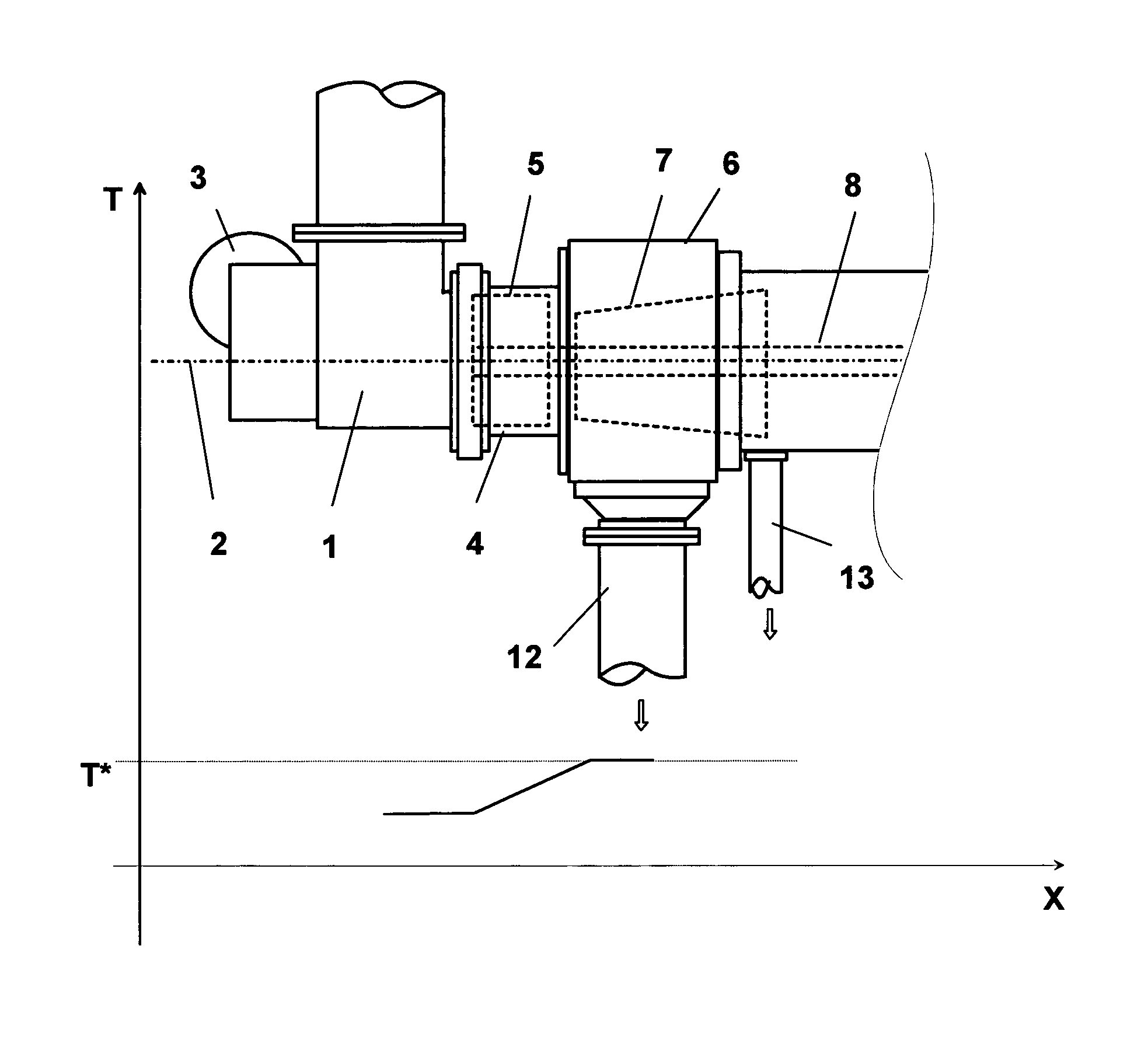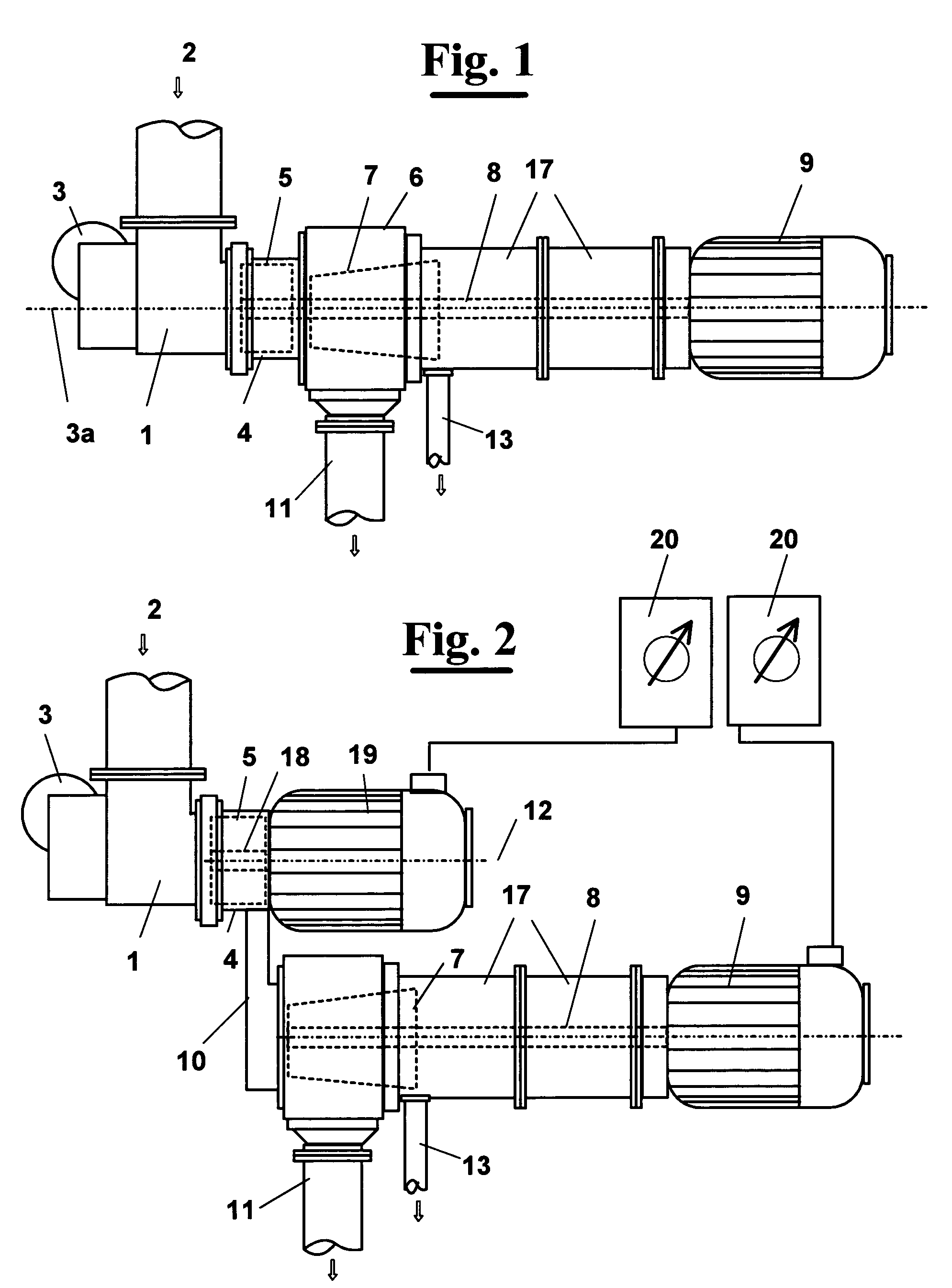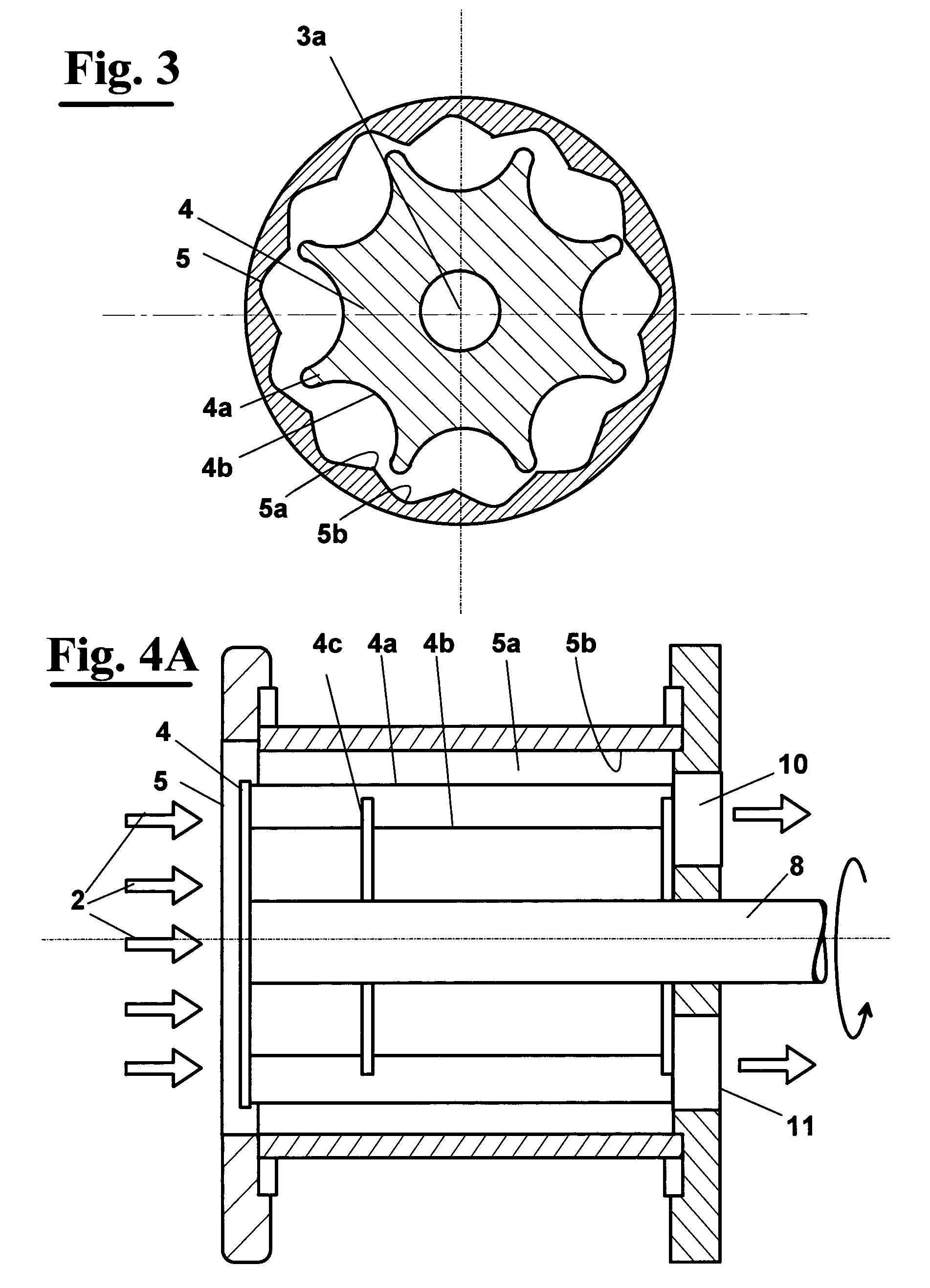Extraction method and apparatus of juice and/or puree, in particular from partially or completely frozen vegetables
a technology of juice and/or puree, which is applied in the field of extracting juice and/or puree from vegetable or animal food, can solve the problems of incomplete defrosting product, in particular vegetable nature, deterioration, and inability to justify construction and production costs, and achieve the effect of optimizing the efficiency of extraction of pur
- Summary
- Abstract
- Description
- Claims
- Application Information
AI Technical Summary
Benefits of technology
Problems solved by technology
Method used
Image
Examples
Embodiment Construction
[0070]With reference to FIG. 1, a rotating machine of the prior art operated along an axis 3a by a motor 3, for extraction at room temperature of puree or juice from animal or vegetable food, comprises an inlet duct 1 where the animal or vegetable food 2 is loaded, for example fruit or vegetables, conveyed by a not shown feeding screw conveyor.
[0071]According to the present invention, the food pulps of the products 2 are loaded in frozen condition, directly as IQF or, in case of frozen products in barrels, in previously triturated smaller parts for example with size set between 50-200 mm.
[0072]The frozen products enter then a softening section where they are subject to a mechanical action up to obtaining a frozen product that is finely chopped, in particular with size less than 6 mm and a defrosting rate of at least 10%.
[0073]The softening section can, for example, comprise an armature 4 rotatable at a high speed in a stator 5. In this section the product is subjected to pressure pu...
PUM
 Login to View More
Login to View More Abstract
Description
Claims
Application Information
 Login to View More
Login to View More - R&D
- Intellectual Property
- Life Sciences
- Materials
- Tech Scout
- Unparalleled Data Quality
- Higher Quality Content
- 60% Fewer Hallucinations
Browse by: Latest US Patents, China's latest patents, Technical Efficacy Thesaurus, Application Domain, Technology Topic, Popular Technical Reports.
© 2025 PatSnap. All rights reserved.Legal|Privacy policy|Modern Slavery Act Transparency Statement|Sitemap|About US| Contact US: help@patsnap.com



